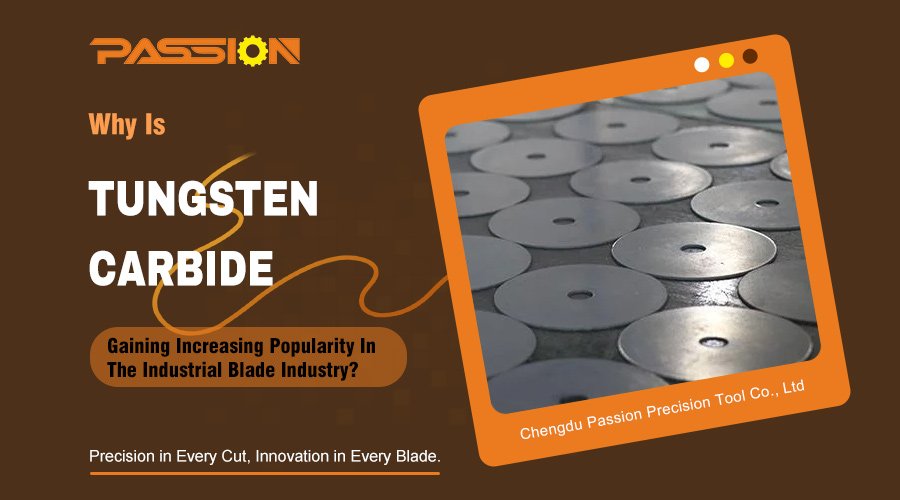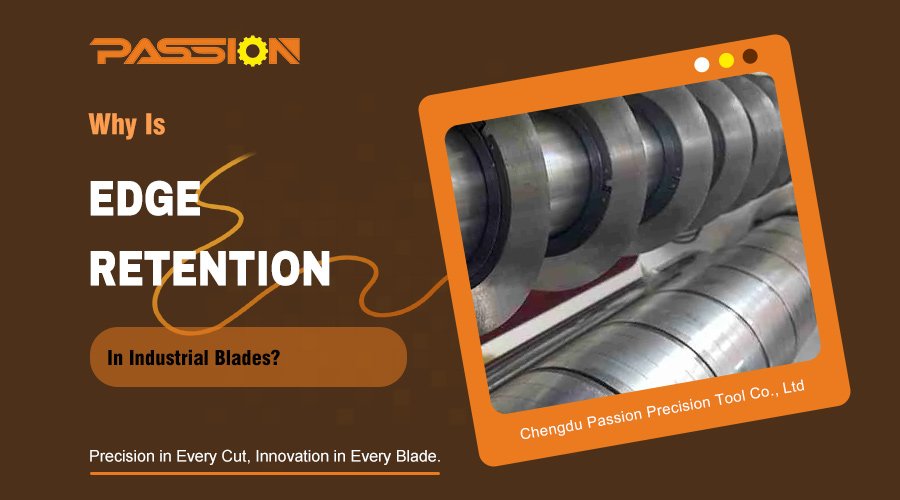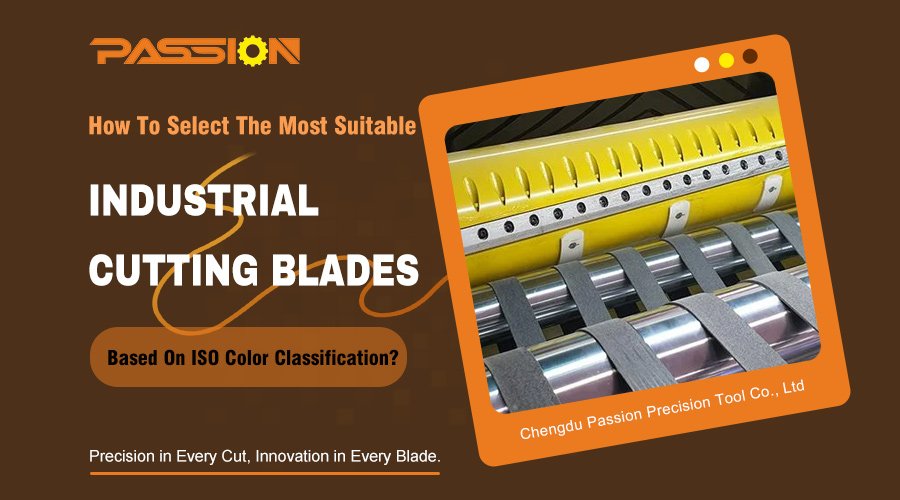Industrial blades are an extremely critical component of modern manufacturing systems, whether in metal slitting, paper cutting, or plastics, food, textiles and other industries, they carry the core cutting tasks. The physical characteristics of the blade not only determines the performance of its own life, but also directly related to production efficiency, product quality and equipment safety. With the level of industrial automation, the cutting speed, processing complexity and diversity of working conditions faced by the blade is also increasing, the traditional “high hardness is good” is no longer applicable.
This article will start from the eight key physical properties, in-depth discussion of industrial blades through the performance coordination, material optimization, heat treatment regulation, structural design, etc., to achieve the best balance between high efficiency and high durability, and combined with the typical industry application cases, to help readers systematically understand the physical properties of industrial blades kernel.
Basic Concepts: Key Physical Properties Of Industrial Blades
Understanding the physical properties of industrial blades is fundamental to selection and design. In a real-world production environment, blades must be able to cut, stay sharp, not break, not deform, and have the longest possible life cycle. This requires a simultaneous evaluation of the physical properties of the blade in a number of dimensions.
Strength - The Core Foundation For Carrying Cutting Forces
Material strength is the fundamental property of a blade’s ability to withstand external loads without damage. The working process of industrial blades is a typical high-stress, high-speed loading scenario. Especially when shearing metal, cutting thick plates or slitting, blades are often subjected to instantaneous loads of several tons or more.
Common strength indicators include:
- Tensile Strength
- Compressive Strength
- Yield Strength
- Flexural Strength
For example, in high-speed steel and carbide, flexural strength is often used to measure the load-bearing limit of the blade during the cutting process, while for carbon or stainless steel blades, tensile and yield strength indicators are more informative.
Hardness - The Key To Preventing Rolled Edges
Hardness directly determines whether the cutting edge is prone to dulling, rolled or chipped. During the cutting process, the edge of the blade needs to be in constant contact with the material, and high hardness can effectively maintain the sharpness and prolong the service life.
Commonly used hardness standards:
- Rockwell hardness (HRC): applicable to metal cutting tools.
- Vickers hardness (HV): for harder materials in the micro-area.
- Brinell hardness (HB): for softer materials such as soft steel.
Example:
- General high-speed steel blades have a hardness range of HRC 62-66.
- Tungstencarbide can reach HRC 80 and above.
- Powder metallurgy materials are even harder, taking into account the homogeneity of the organization.
However, higher hardness does not mean that it is suitable for all applications. Higher hardness usually means increased brittleness, which makes them unsuitable for shock-loaded applications.
Toughness - A Safety Barrier Against Fracture
Toughness refers to the ability of a material to absorb energy before fracture, and is one of the core indicators for evaluating a blade’s ability to resist impact and fracture.
For example, when handling paper containing metal foreign matter, cutting rubber or fibers with uneven structure, the blade must have strong toughness to avoid local stress concentration leading to chipping and fracture.
Toughness indicators are often passed:
- Impact absorption work (e.g. Charpy impact test)
- Resistance to crack extension
For example, some blades are enhanced in toughness by the addition of elements such as molybdenum, nickel, and chromium, and the use of a multi-stage tempering heat treatment process also helps to maintain a certain level of toughness under high hardness conditions.
Wear Resistance - The Key To Longer Life
Wear resistance is the ability of a blade to resist the peeling of material layer by layer in an abrasive environment. In high-speed cutting, dusty or particle-containing environments, wear resistance determines how often blades need to be replaced, directly affecting the frequency of line downtime and operation and maintenance costs.
Influencing factors:
- Density and size of carbide distribution in the material
- Surface treatment process
- Blade hardness and thermal stability
In actual cases, titanium (TiN), chromium (CrN) and other coatings can increase wear resistance by more than 50%; and powder metallurgy high-speed steel is more suitable for high wear-resistant occasions due to its fine and uniform carbide phase.
Thermal Conductivity & Thermal Stability - The Basis Of Anti-thermal Deformation Guarantee
Cutting process friction will rapidly heat up, the blade edge if the heat conduction performance is poor, the formation of heat concentration area, resulting in thermal deformation, destabilization or even annealing blade softening.
Good thermal conductivity can:
- Quickly disperse the heat, reduce the local temperature.
- Slow down the softening of the material to maintain the sharpness.
- Prevent the internal stress imbalance of the blade caused by the large temperature difference.
Such as copper, aluminum alloy, although good thermal conductivity, but the strength is not enough; and tungsten steel material has good thermal conductivity and thermal stability, widely used in heat-sensitive materials cutting process.
Fatigue resistance - The Hidden Ability To Resist Alternating Loads
Industrial blades are often operated under cyclic, alternating stresses, and fatigue damage can occur without warning, making it one of the most common and dangerous failure modes. It is one of the most common and dangerous failure modes.
For example, a circular blade on a slitting line that is subjected to repetitive stresses in continuous operation can break apart after thousands of cuts if it suffers from poor fatigue performance.
Lifting methods include:
- Reducing areas of stress concentration (e.g., filleting)
- Controlling internal sources of micro-cracking (inclusions, shrinkage)
- Use of high quality ingots or powder metallurgy materials
Coefficient Of Friction - A Key Factor In Determining Cutting Smoothness
The coefficient of friction between the blade and the material is directly affected:
- Cutting resistance
- Energy consumption levels
- Material Adhesion and Plugging
For example, when cutting sticky materials such as plastic film, tape, etc., if the coefficient of friction is too high, the blade will be easily “entangled” or stuck by the material, which will affect the cutting quality.
In order to improve the friction performance, can be used:
- Mirror polishing (to reduce surface roughness)
- Surface coatings (e.g. DLC, PTFE, etc.)
- Nano-coating technology (combining wear resistance with low friction)
Density & Microstructure - The Underlying Variables That Determine The Nature Of The Material
The density of the blade material relates to the overall weight, dynamic balance and inertia control of the blade, especially in high-speed rotary applications such as circular knives and flying shears, where uneven density can create polarizing forces.
More important is the microstructure:
- Grain size (fine grain enhancement)
- Carbide type and distribution
- Inclusion of inclusions (oxides, sulfides)
Powder metallurgy process is more capable of achieving dense and uniform organization compared to traditional casting and forging methods, and is one of the mainstream directions for high-end industrial blades.
The Interrelation Of Toughness, Hardness, And Brittleness
Industrial blades must be designed to optimize the balance between toughness, hardness, and brittleness.
There is a natural contradiction between the three: when the blade hardness is increased, its wear resistance is enhanced and sharpness is easier to maintain, but the material also becomes more brittle and is more prone to chipping or fracture on impact.
If toughness is emphasized, so that the blade can absorb more energy and withstand impact damage, it will usually be at the expense of hardness, which results in the cutting edge being easily blunted and the wear is increased, which affects cutting efficiency and accuracy; as for brittleness, it is usually at the expense of hardness, which results in the blade being easily dulled and worn out, which affects cutting efficiency and accuracy.
As for the hardness, it is the hardness that makes the blade so brittle. Precision; as for brittleness, it is a reflection of the material’s ability to resist fracture decline, usually in the high hardness, low toughness state significantly enhanced, the blade is more likely to occur instantaneous fracture.
An ideal blade design strikes a dynamic balance between high hardness and high toughness, giving it both long-lasting sharpness and the ability to resist unpredictable shock loads in machining. But this dual combination of performance is not easy to achieve. In order to solve this problem, engineers usually adjust the heat treatment technology, such as the use of differential quenching and multiple tempering process, so that the core of the blade to retain a certain degree of toughness, while the edge of the blade has a sufficiently high degree of hardness; at the same time, through the optimal combination of alloying elements, such as vanadium, molybdenum, chromium, and other elements added to the steel, but also in the microstructure of the level of the material to improve the synergistic effect of the strength and toughness of the material. In addition, the introduction of coating technology allows us to maintain the toughness of the blade base material under the premise of high hardness coatings to enhance the edge of the wear resistance and impact resistance, to further extend the life of the blade.
For example, in high-end slitting blade applications, often use powder metallurgy material as the blade body, supplemented by nitriding treatment, so that the edge hardness of HRC68 or more, while the overall toughness to ensure that the continuous high-speed cutting without fracture. This multi-dimensional regulation of the idea, is the core concept of modern industrial blade manufacturing.
Strategies For Property Balancing In Industrial Blades
According to specific working conditions and tool types, the following strategies can be adopted for property balancing in blades:
Multi-Layer Composite Structure
For example, a three-layer composite blade with a high toughness material in the middle and a high hardness alloy in the outer layer to achieve both impact and wear resistance.
Differential Heat Treatment
of the blade edge and the main body are treated separately, the edge of the high hardness, high toughness of the blade body. For example, flying shear blades are often induction hardened and tempered.
Precision Powder Metallurgy Process
Uniform distribution of particles, eliminating weak points; fine microstructure, strong and tough combination.
Coating Technology Upgrading
Such as nano TiAlN, DLC, CrN and other new coatings, so that the blade wear resistance increased by 2 to 5 times, while reducing the coefficient of friction, and effectively fight against thermal fatigue and bonded wear.
Performance Combinations In Typical Applications
Industrial blades face a wide range of material properties, operating environments and cutting modes in different industries and conditions, and therefore require different combinations of physical properties.
Paper Industry
In the paper industry, blades are required to cut continuous rolls of paper over long periods of time, placing high demands on the stability of the equipment and the continuity of the blade. Therefore, these blades must not only have a medium-high level of hardness to maintain sharpness, but also must have good toughness to resist the vibration of the operation may occur and the impact of foreign objects, in addition to a certain degree of corrosion resistance to cope with hot and humid environments in the pulp residue. Material, often used 9CrSi, SKD11 or chromium-plated stainless steel and so on.
Metal Processing Industry
In the metal processing industry, the hardness and abrasion resistance of the blade must be excellent as the cutting objects are mostly high hardness and thick materials. At the same time, the metal in the cutting process will generate a lot of heat, so the blade also needs to have excellent thermal stability and thermal conductivity, in order to avoid overheating edge softening or deformation. In order to meet these requirements, usually choose carbide, powder high-speed steel, and even in some high-end occasions using diamond-coated tools.
Food Processing Industry
In the food processing industry, the blade in addition to the need for basic cutting performance, but more importantly, with good corrosion resistance and food contact safety. Blades need to meet the non-rust, easy to clean, non-stick and other characteristics, suitable for long-term use in the environment of high humidity and frequent temperature changes. These blades are usually made of 420J2, 304 stainless steel or ceramic materials, and supplemented with mirror polishing or sterile coating treatment to ensure that they do not release harmful substances in food contact.
Film & Rubber Industry
For cutting plastic film, rubber, tape and other materials, blades face more challenges from the high viscosity of the material itself and low cutting resistance. At this time, the blade needs to have a low coefficient of friction and anti-adhesion performance, to avoid material residue in the cutting process, affecting the subsequent cutting. A common practice is to use high chrome steel or DLC (diamond-like) coating technology to obtain very low surface friction.
Chemical Fiber Industry
The cutting of high hardness composites such as fiberglass and carbon fiber is extremely hard on the blade. The blades used in such occasions must have ultra-high wear resistance and sharpness, often using diamond coating or ultra-fine crystal carbide materials, and the need for micro-angled fine cutting process to reduce the expansion of micro-cracks on the edge, thereby extending the service life.
It can be seen that the performance combination of industrial blades is not set in stone, but according to the cutting object, equipment conditions and customer demand, targeted custom optimization. Behind each set of performance collocation is a deep understanding of the physical nature and precise control of the manufacturing process.
Behind the performance of industrial blades is a complex game of physical mechanisms and materials engineering. Only through a deep understanding of each physical property and making reasonable performance trade-offs based on actual applications can we create truly “suitable” industrial blades.
In the future, with the gradual popularization of AI intelligent manufacturing, big data wear prediction, and composite material applications, the design of industrial blades will be smarter, more refined and more efficient. For those of us in the industry, returning to the basics and understanding the physical properties of materials is the foundation for today and the future.






